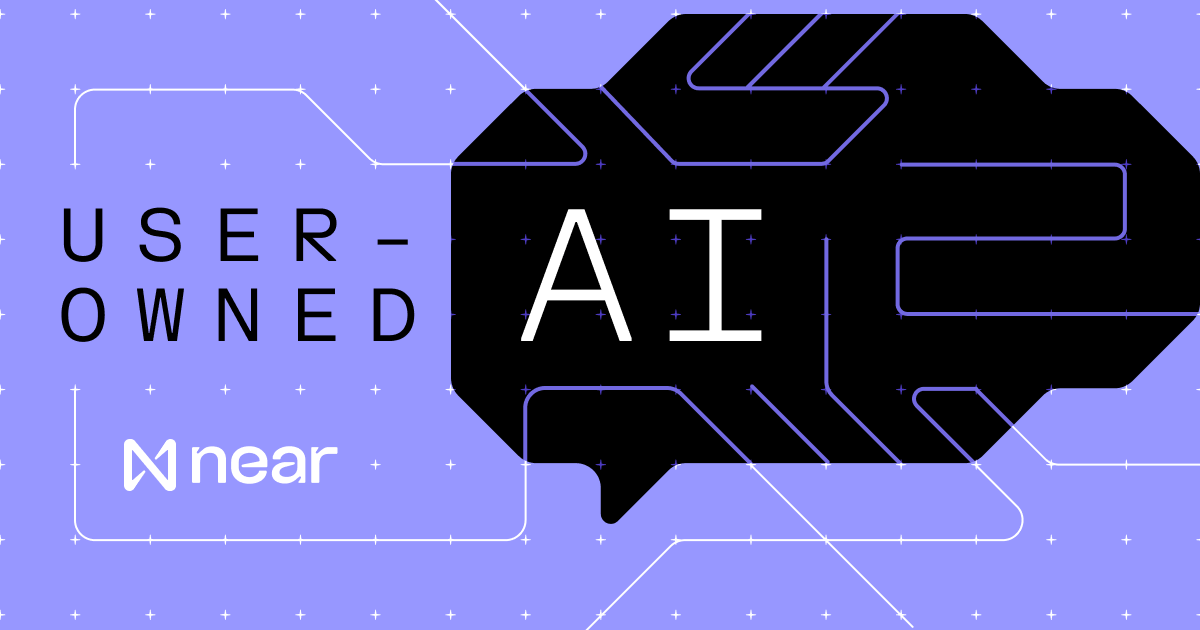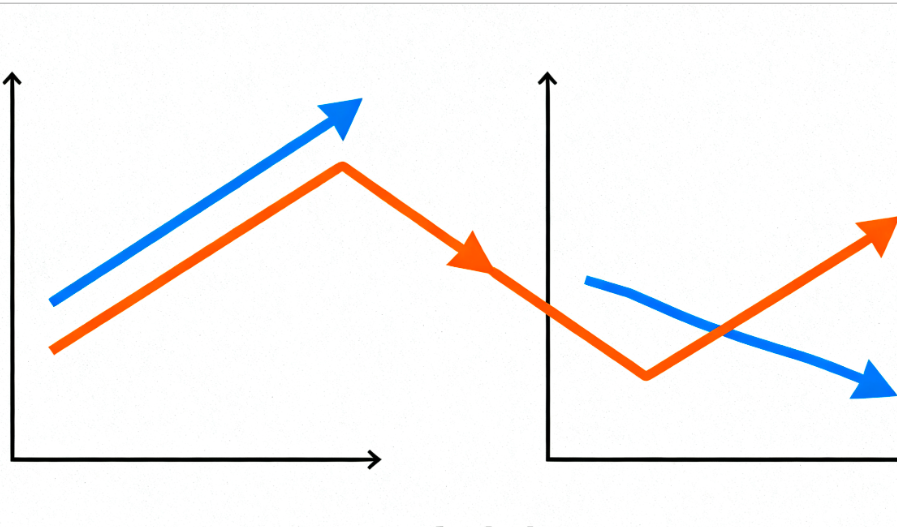
In mid-October 2025, the NEAR Foundation, at a critical turning point in its ecosystem development, underwent its most significant high-level personnel adjustment in recent years, appointing five senior industry professionals at once to key areas including product, business, marketing, technology, and human resources.
This management reinforcement covering multiple key areas is driven on one hand by the scarce attention from developers and capital, as well as increasingly fierce competition within the industry. On the other hand, it is closely related to NEAR's strategic shift towards the product and ecosystem of "User-Owned AI," attempting to translate years of technical reserves into scalable applications.
As stated by Illia Polosukhin, co-founder of the NEAR protocol, the addition of the five new executives will help convert technology into products, break out of the Web3 circle, and promote the global deployment and adoption of privacy-preserving AI-native products.
"Five Tiger Generals" On Duty: Covering Product, Market, and Technology
The NEAR Foundation, which has focused on underlying technology in recent years, made a notable personnel adjustment in October 2025, adding five senior executives to its leadership at once. The five new executives previously held important positions at renowned institutions such as Bloomberg, Digital Currency Group (DCG), Flipside Crypto, and dYdX. Specifically:
-
Matt Kummell: Chief Commercial Officer (CCO): He possesses extensive experience in both traditional finance and the crypto space, having served as Senior Vice President of Operations at DCG and been a board member of DCG's mining company Foundry and blockchain media outlet CoinDesk. At the NEAR Foundation, he will formulate clear business strategies to help the NEAR ecosystem achieve broader market adoption.
-
Alycia Tooill: Head of People: She has deep experience in HR for tech startups and blockchain companies, having previously served as Head of People at Wyre and as Senior Vice President of People at blockchain data analytics company Flipside. As the NEAR ecosystem and business scope expand, attracting and retaining tech talent in AI and privacy computing becomes crucial.
-
Chris Briseno: Chief Marketing Officer (CMO): He has practical experience in crypto marketing. Before joining NEAR, he served as CMO at blockchain data platform The TIE. Briseno is familiar with crypto industry marketing tactics and community operations. His joining aims to enhance NEAR's global visibility and user awareness, strengthen its market appeal, and truly translate technological advantages into user scale and ecosystem activity.
-
George Zeng: Chief Product Officer (CPO) & NEAR AI General Manager: Zeng takes on the role of CPO at the NEAR Foundation and concurrently serves as the General Manager of the newly established NEAR AI division. He has a background in product management and entrepreneurship spanning Web2 and Web3, having worked as a Product Manager at Facebook and served as COO of the decentralized exchange dYdX. His appointment also reflects NEAR's high emphasis on the AI direction. As the overall head of the NEAR AI division, Zeng will accelerate R&D and market investment in NEAR's privacy-preserving AI products.
-
Bowen Wang: Chief Technical Officer (CTO): As a core member of the NEAR technical team, Bowen Wang was appointed CTO of NEAR and leads core R&D work externally as the founder of the R&D-focused technical team "NEAR One." Bowen is a backbone of NEAR's early engineering team, with technical expertise covering underlying architectures like blockchain protocols and sharding technology.
It can be seen that the five new executives possess decades of profound experience in their respective fields of product, business development, marketing, talent, and underlying technology. Their addition allows NEAR to form a diverse and complementary leadership team, collectively driving NEAR's critical transition from the "technology architecture phase" to the "product landing and commercialization phase."
"User-Owned AI" Strategy
The blockchain industry has witnessed a new trend of integration with Artificial Intelligence (AI) in recent years. As a co-creator of the Transformer architecture, Illia has a strong technical background and influence in the AI field, which naturally led NEAR to transition from a sharded public chain to integrating with AI. The NEAR Foundation explicitly proposed the concept of "User-Owned AI" in mid-2024, believing that the future of AI technology should be controlled by users, rather than monopolized by a few tech giants.
NEAR aims to address this issue by building open AI infrastructure on the blockchain, returning control of data and intelligence to users, thereby avoiding the emergence of "AI oligarchs." Precisely for this reason, NEAR initiated a phased strategic adjustment in 2024, shifting its focus from purely improving underlying blockchain technology to the integration of "blockchain + AI" – striving to become a pivotal platform for user-controlled AI.
To implement this strategy, the NEAR Foundation established a team and project structure specifically responsible for the AI direction in 2024. This includes the "NEAR.ai R&D Lab" led by Illia and co-founder Alex Skidanov, concentrating company resources on AI-related basic research and prototype development. This lab first set out to build an "AI Dev" system, using generative AI to automatically build end-to-end Web3 applications based on user intent.
NEAR has already planned and launched a series of specific business directions around "User-Owned AI," including privacy-preserving AI computation, core infrastructure construction, and integration of AI with on-chain functionality. For example, NEAR's launched blockchain Intents functionality can be seen as an on-chain interface for AI agents and is being used to support the first autonomous AI agents making independent decisions and performing operations on-chain. Intents is a universal liquidity layer that allows users to simply specify a target intent, with the system automatically completing the transaction process in a multi-chain environment. The NEAR Foundation revealed that, as of now, the cumulative transaction volume processed by NEAR Intents has exceeded $20 billion and is expected to double by the end of 2025.
The NEAR Foundation also established HZN, an incubator and investment department focused on AI projects, to support early-stage Web3 x AI projects.
The incubation program quickly showed results. In June 2025, the NEAR Horizon AI incubation program announced six selected teams. These teams include: Mizu (building an open data layer), Pond (analyzing on-chain data using graph neural networks), Nevermined (designing payment infrastructure for AI commerce), Hyperbolic (providing an open AI cloud), Ringfence (enabling creators to monetize their work), and Exabits (providing GPU computation).
On the funding front, the NEAR Foundation announced the launch of the NEAR AI Agent Fund on February 6, 2025. This fund plans to deploy $20 million in liquidity on-chain, focusing on expanding the development of fully autonomous and verifiable agents built on NEAR technology.
Through the above layout, NEAR gradually completed the shift in mindset from focusing on the technology itself to technology monetization and application during 2024-2025.
Opportunities and Challenges for the NEAR Foundation
Over the past year, the NEAR Foundation has shifted its focus from building underlying infrastructure to User-Owned AI and product implementation. In recent months, NEAR has continued to advance in the direction of "User-Owned AI."
On September 16, the decentralized prediction network Allora Network announced that its "collective intelligence/prediction layer" was integrated into the NEAR ecosystem, aiming to provide usable prediction signals for applications and AI agents in scenarios such as trading, risk management, and routing. In early August, the NEAR Foundation partnered with IQ AI around "agent assetization" and multi-chain execution: on one end, supporting agents to issue and maintain their own economies on-chain; on the other end, utilizing NEAR Intents and underlying interoperability to encapsulate complex actions like cross-chain transactions, collateralization, and market making into an "intent → automatic execution" process.
During the same period, the NEAR team released its annual "State of AI on NEAR: 2025 Update," identifying AI Agents and the Verifiable Agent Protocol as the main theme for the year and emphasizing synergy with external liquidity (including Ethereum L2s, etc.), enabling agents to naturally call funds and functions across multiple chains. To meet these application-side demands, NEAR continued to promote the practical implementation of Chain Signatures. This capability allows NEAR contracts to sign and initiate transactions on other chains and can be used to achieve cross-chain flow and composable routing of native assets, providing an engineering foundation for subsequent cross-chain execution, liquidation, and settlement of AI agents.
In terms of team size and organizational structure, NEAR had already undergone a large-scale adjustment back in 2024, officially disclosing a reduction of approximately 40% of its staff, intending to concentrate resources on fewer but higher-impact items. The recent one-time filling of multiple key executive positions is clearly aimed at further accelerating the strategy for the user-owned AI future and the scalable adoption of privacy-friendly AI-native products.
Simultaneously, within the developer ecosystem, NEAR needs to compete with other public chains like Ethereum, BSC, Solana, and Avalanche for high-quality projects and developer resources. Over the past two years, NEAR's monthly active developer count has been on a long-term downward trend, and its cross-chain developers have recently seen significant outflows again, approaching the low range of the past year, turning towards "contraction and restructuring."
Now, various public chains (L1/L2 and appchains) are competing intensely to the extreme in terms of performance, cost, toolchains, and distribution channels, making capital and developer attention even scarcer. Whether the User-Owned AI narrative will be effective might, in the short term, subject the NEAR Foundation's execution capability and product delivery to a major test. How to stand out in the highly competitive Web3 AI track will be a key issue for the new leadership team to solve.
















